CAMPUS LIFE
in the NEW (NOT) NORMAL
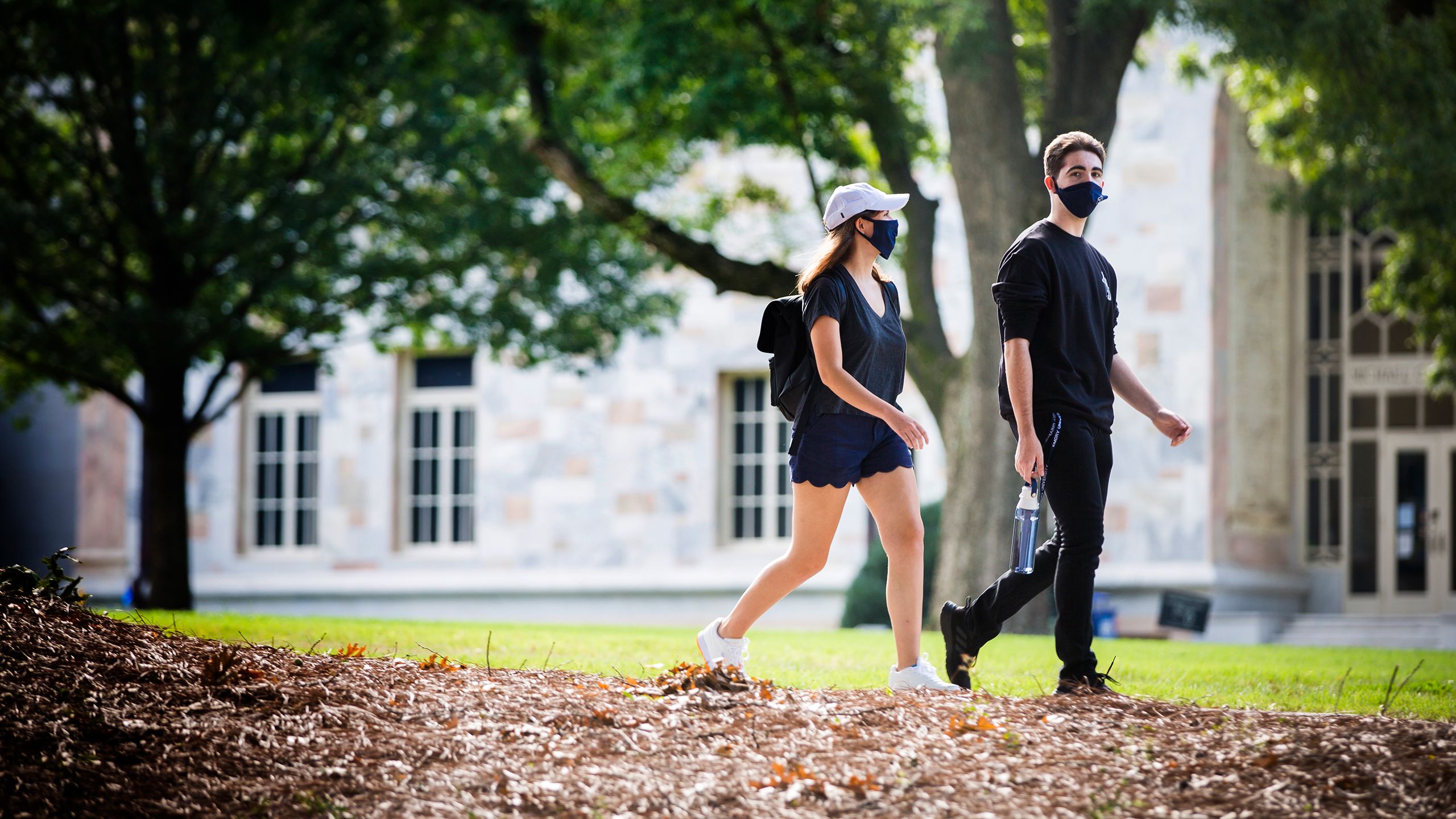
Precautionary COVID-19 testing. Mandatory mask wearing and social distancing. Limited in-person classes. Despite new safety and health protocols, students returned to Emory campuses this fall with an unprecedented excitement to move forward with their academic journeys. Here’s a brief glimpse at what everyday life has looked like for students, faculty, and staff so far this semester.
On June 11, 2020, after weeks of careful cross-university collaboration and deliberation—including consulting with its leading medical and public health experts—Emory announced it would reopen the Atlanta and Oxford College campuses to host a hybrid model of in-person and online classes for the fall 2020 semester. Between that date and the first student move-in on August 13, the university worked diligently to develop a rigorous set of science- and data-based COVID-19 protocols, procedures, and facility reconfigurations so that Emory could deliver its trademark, high-quality education while keeping its students, faculty, and staff as safe as possible.
“We each have a responsibility to maintain a safe and vibrant living and learning environment for all members of the university community and the larger society,” says Enku Gelaye, vice president and dean of Campus Life. “As a caring community, Emory has developed a community compact [for students, faculty, and staff]. We define this document as an agreement among members of the community to pursue the common good together—that common good is reducing exposure to COVID-19 for ourselves and others in our university family.”
On-campus housing for the fall semester was limited to first-year and new transfer students, international students, and select others. Students arriving on both the Atlanta and Oxford campuses first reported to one of several locations for a rapid COVID-19 test and health screening, and then either moved into their residence halls or self-quarantined at home or in special campus accommodations until cleared to be on campus.
New student orientation was conducted over three days with a mix of online programs, videos, and real-time sessions, says Jill Camper, director of new student programs in the Office for Undergraduate Education in Emory College of Arts and Sciences. “We designed an orientation that was inclusive of all new students, regardless of whether they are living on campus, off campus, or at home this semester,” Camper says.
Despite the required changes this semester, little has dampened the enthusiasm of Emory’s newest students, who connected through social media, engaged in pre-registration appointments with advisers, and reached out to make campus contacts, says Steve Savage, associate director of communications in the Office for Undergraduate Education.
“The excitement of these students is absolutely palpable, and that’s true of our first-year students who chose to study remotely, too,” Savage says. “We heard from students throughout the summer who had been hunkered down and were ready to start something new. You could feel the anticipation.”

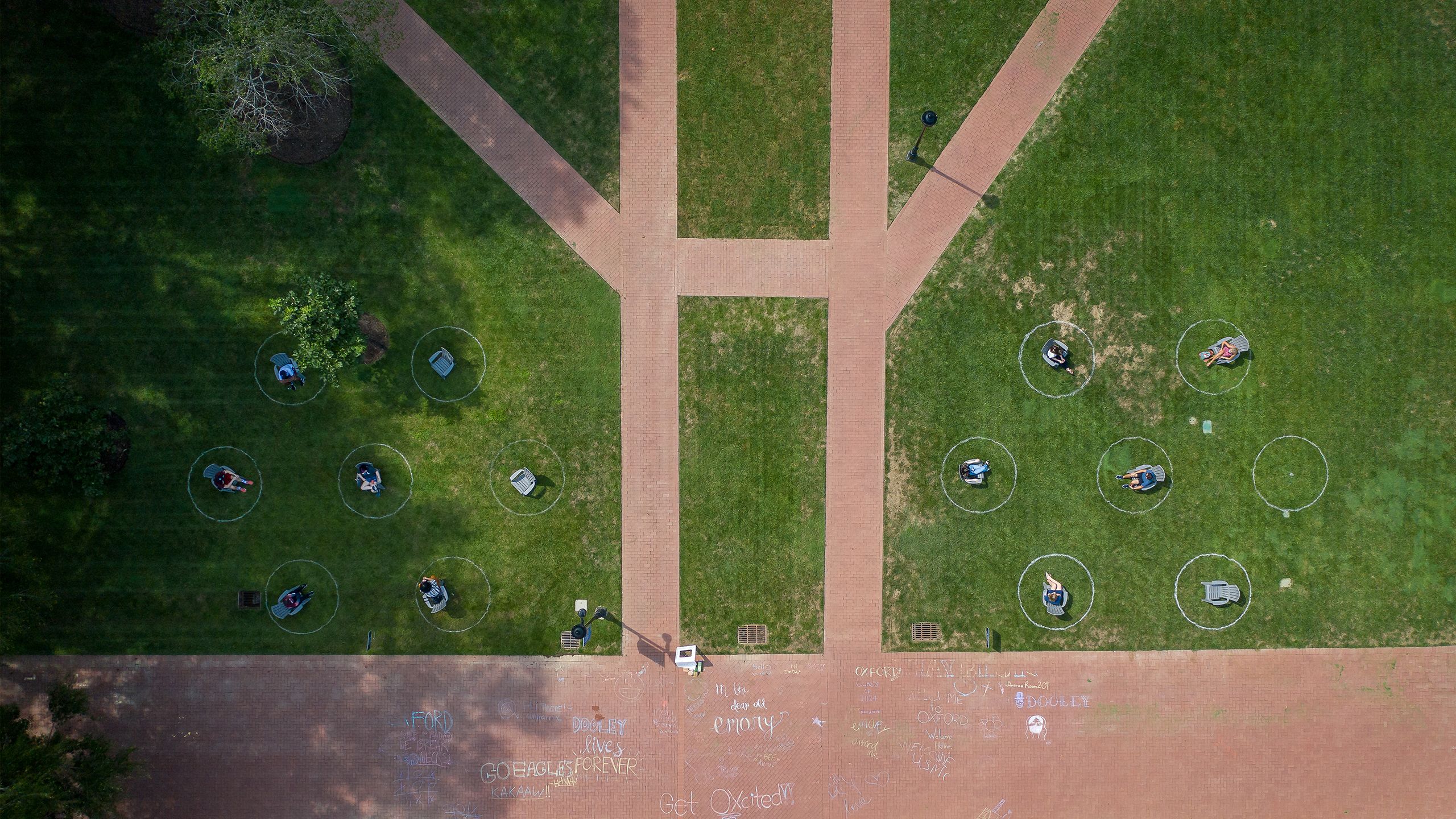
ARRIVE, TEST, AND MOVE IN
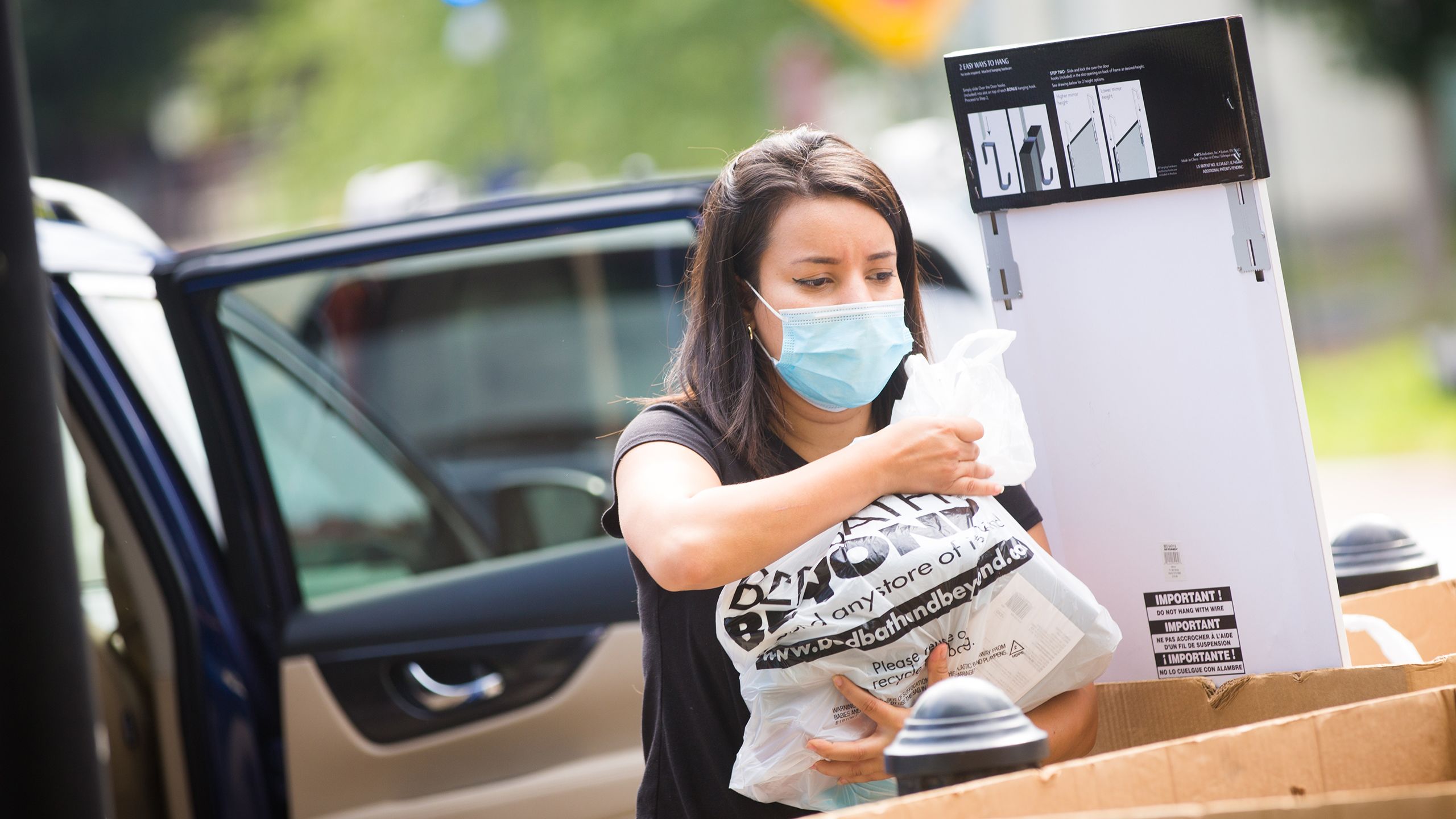
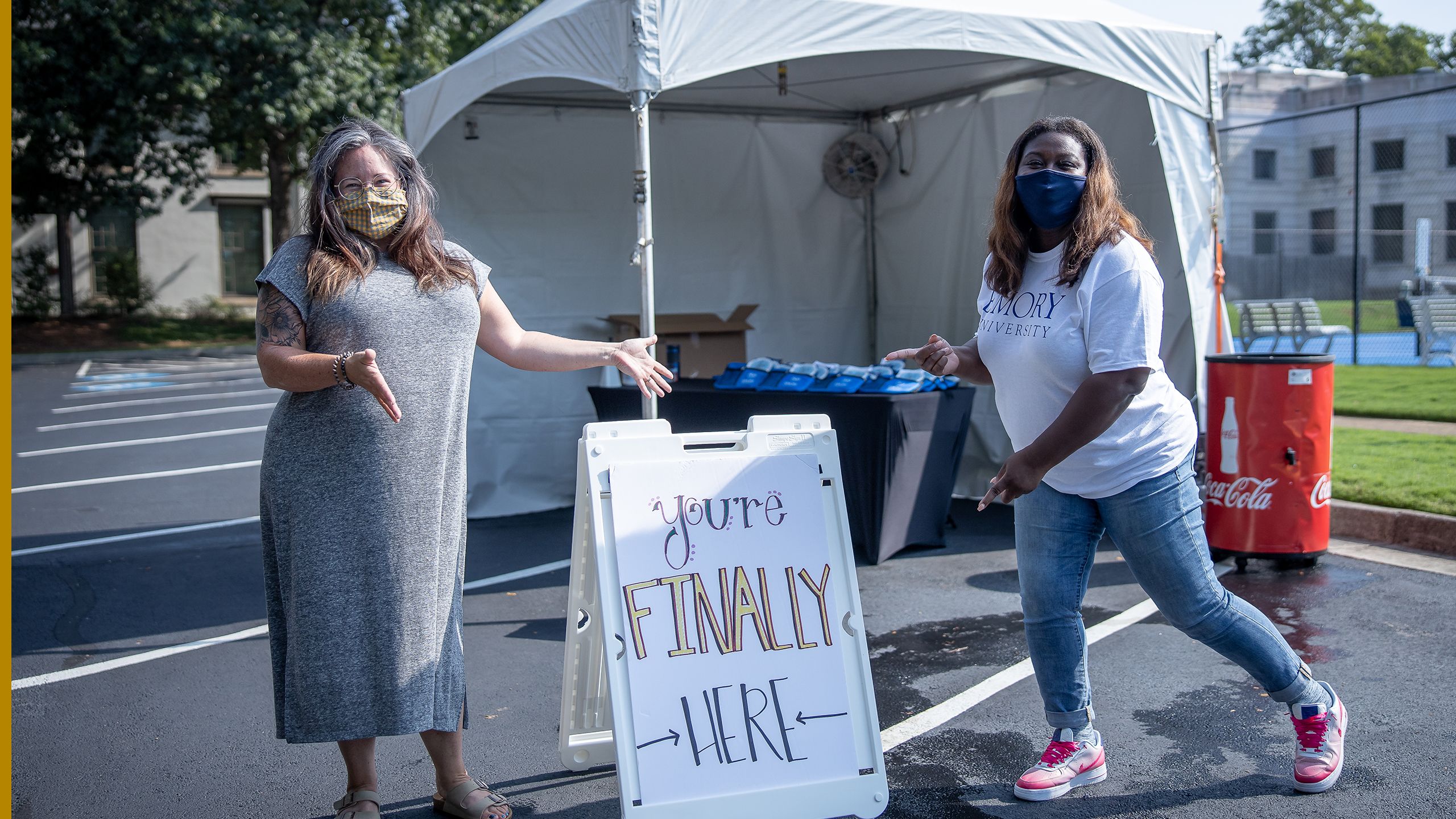
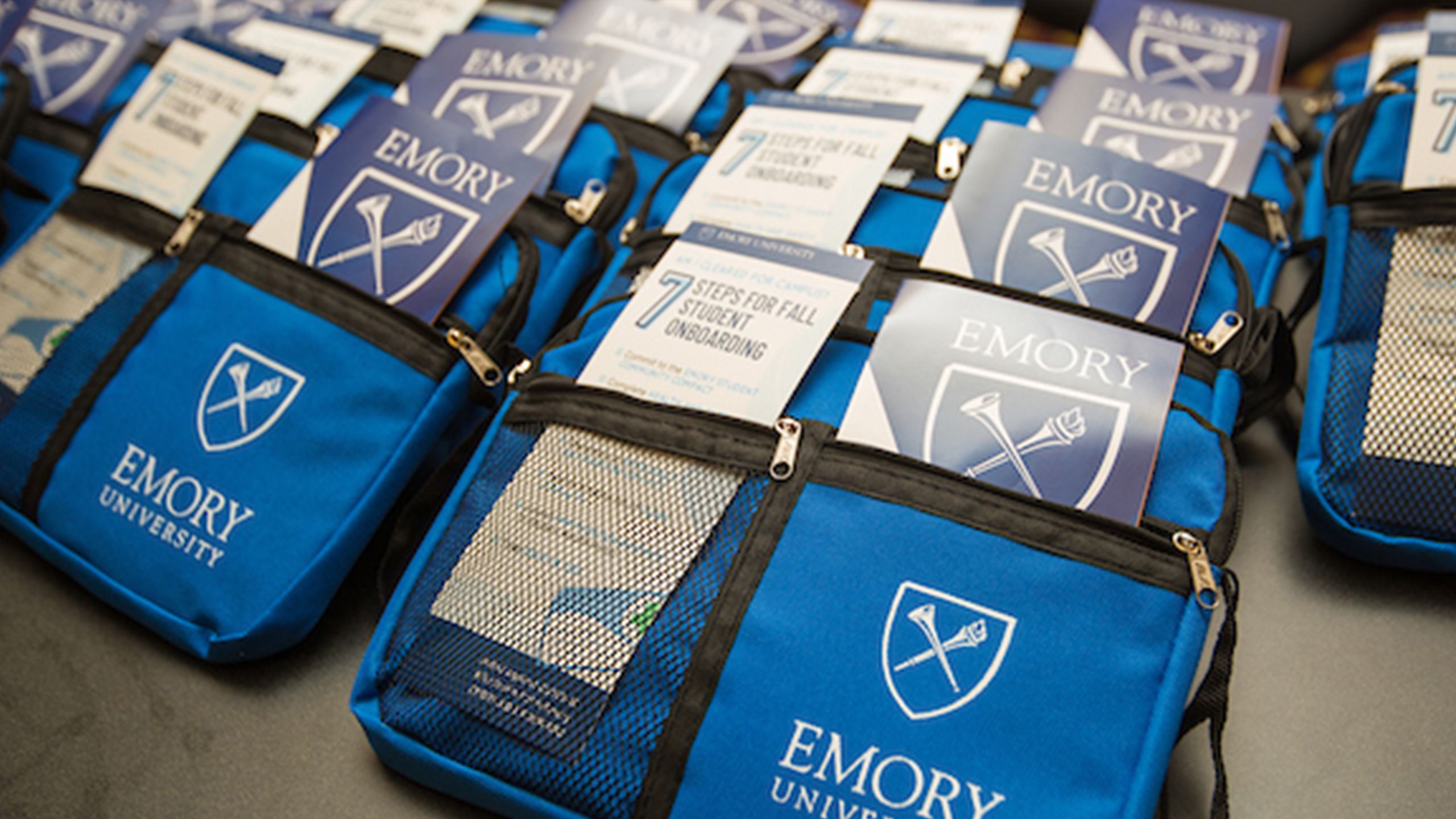
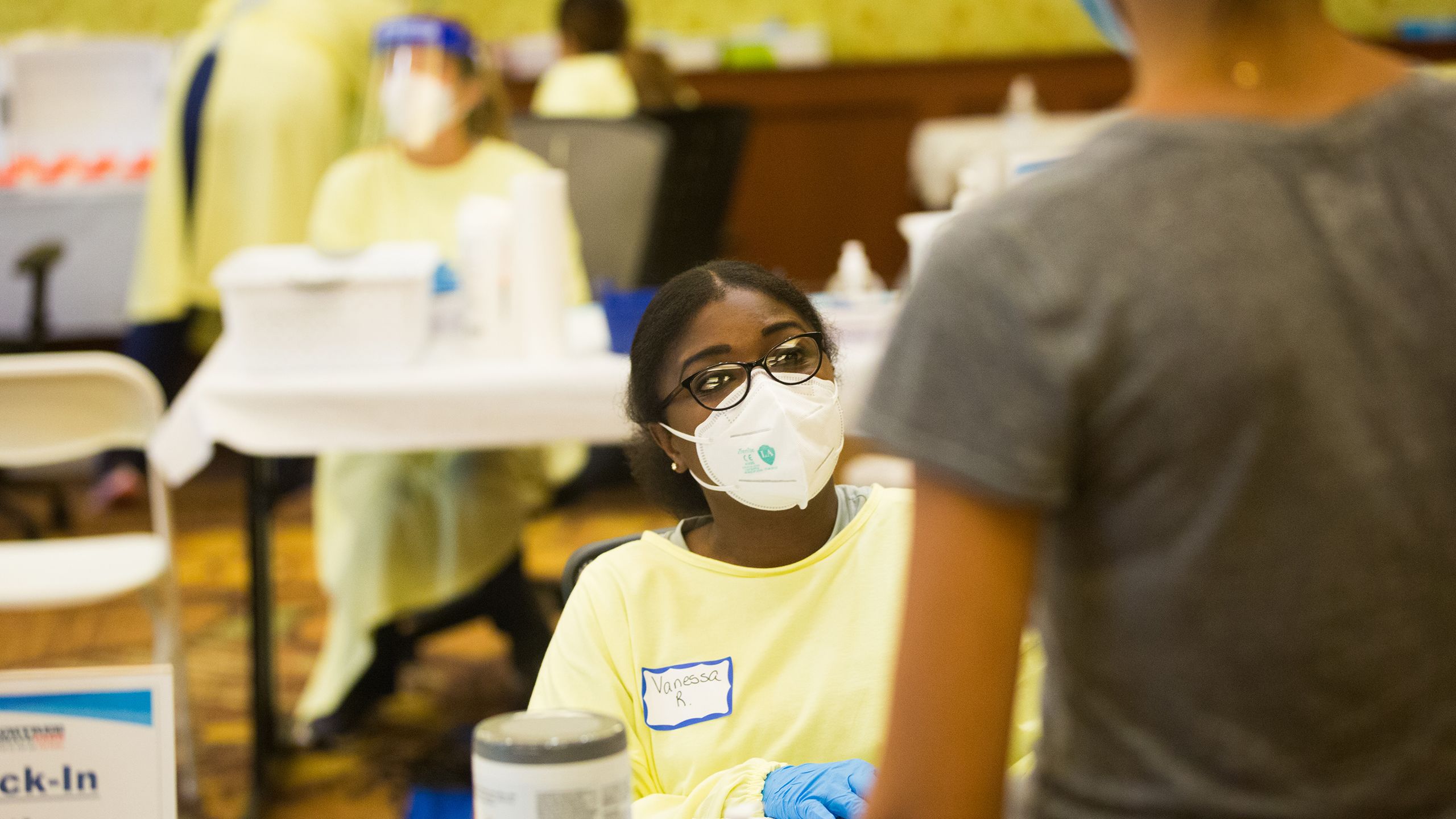
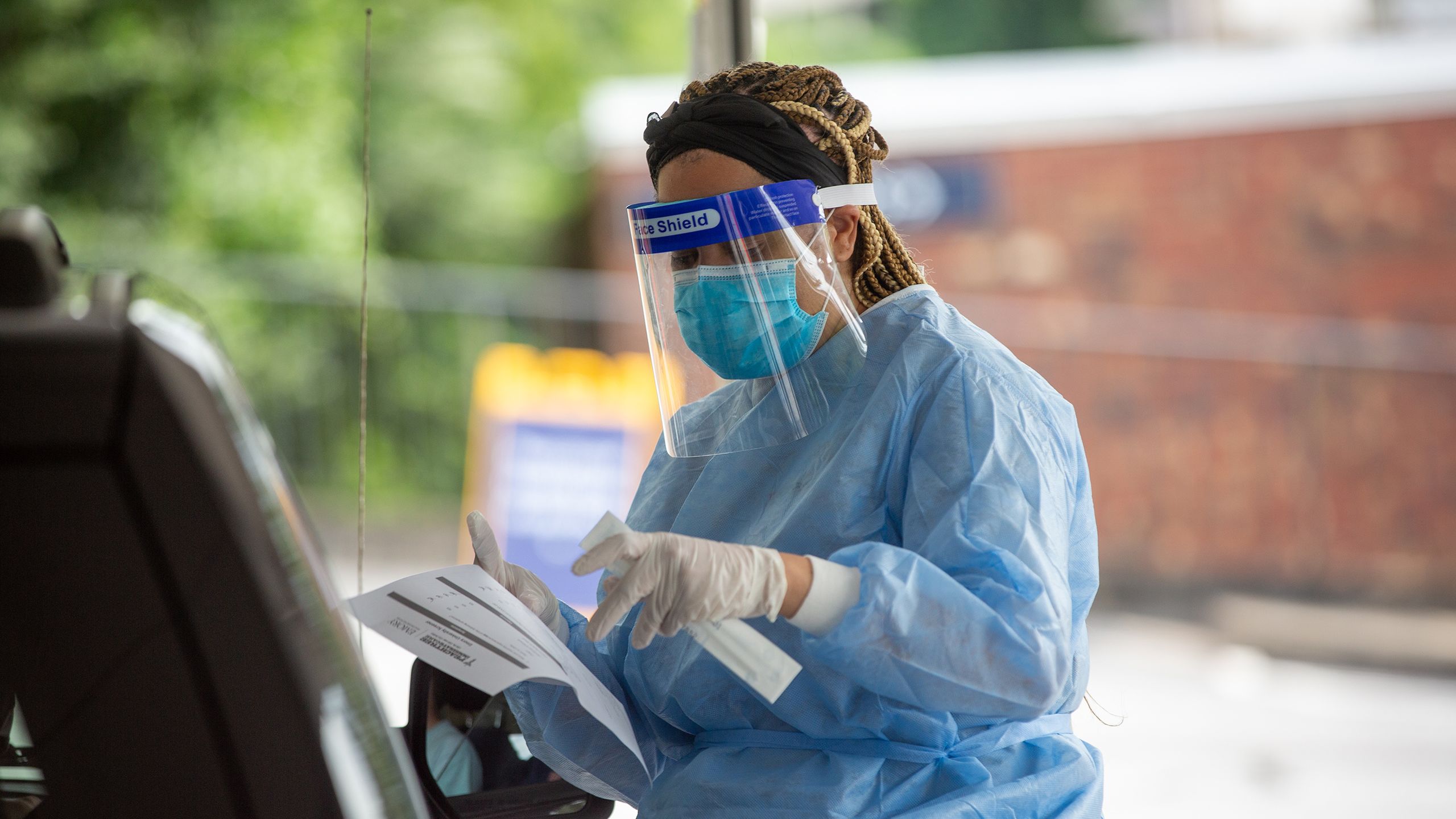
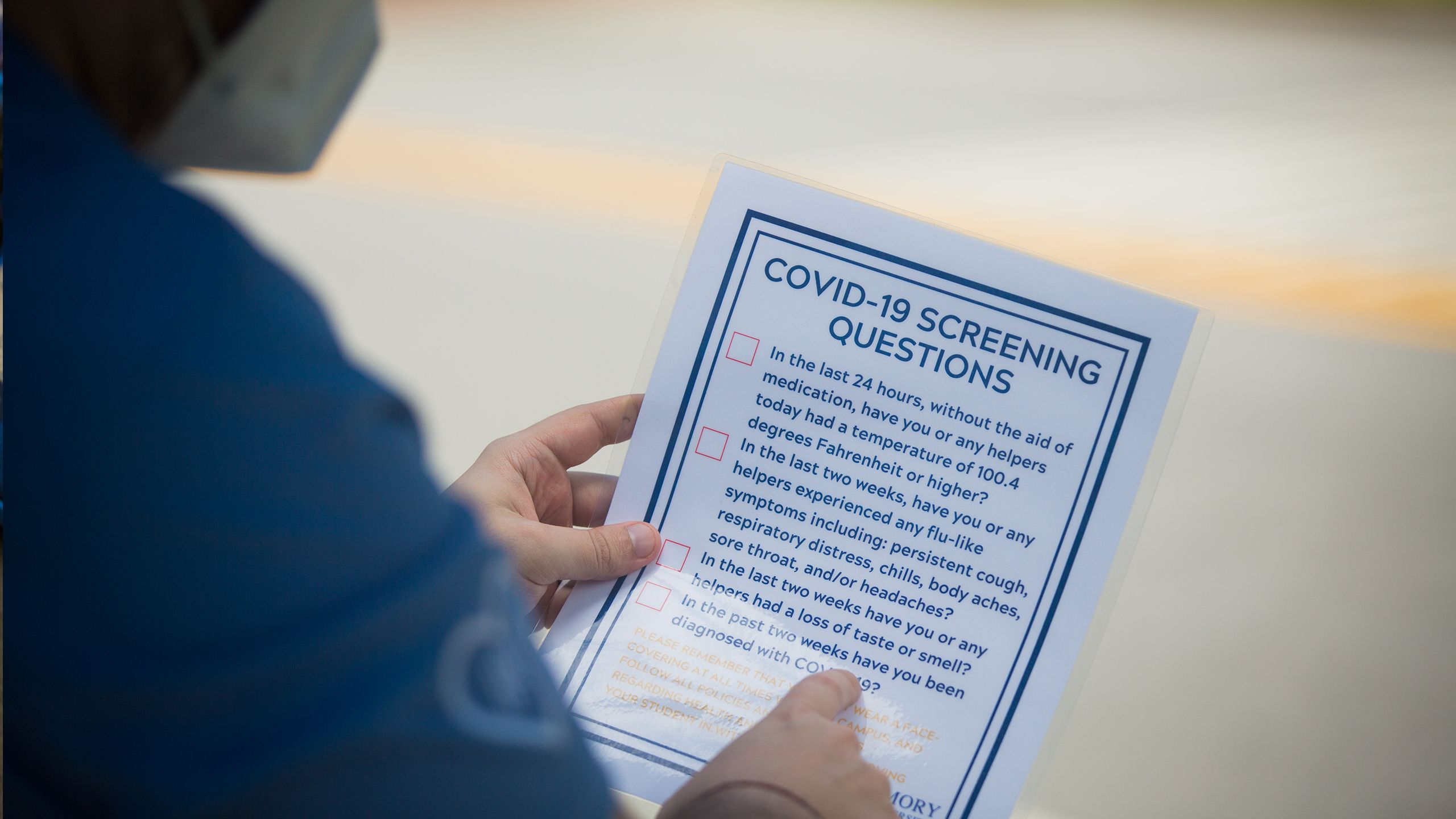

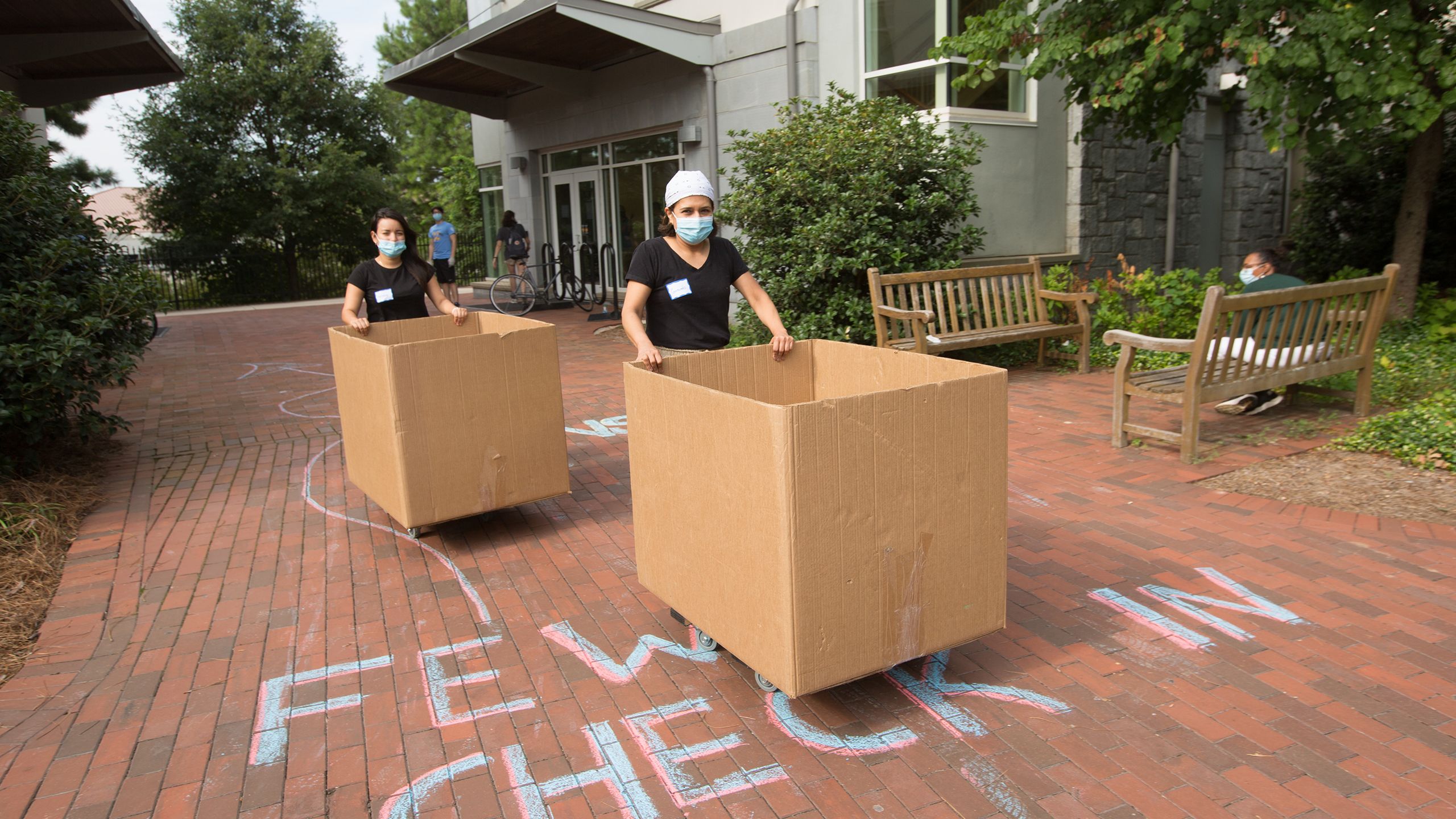
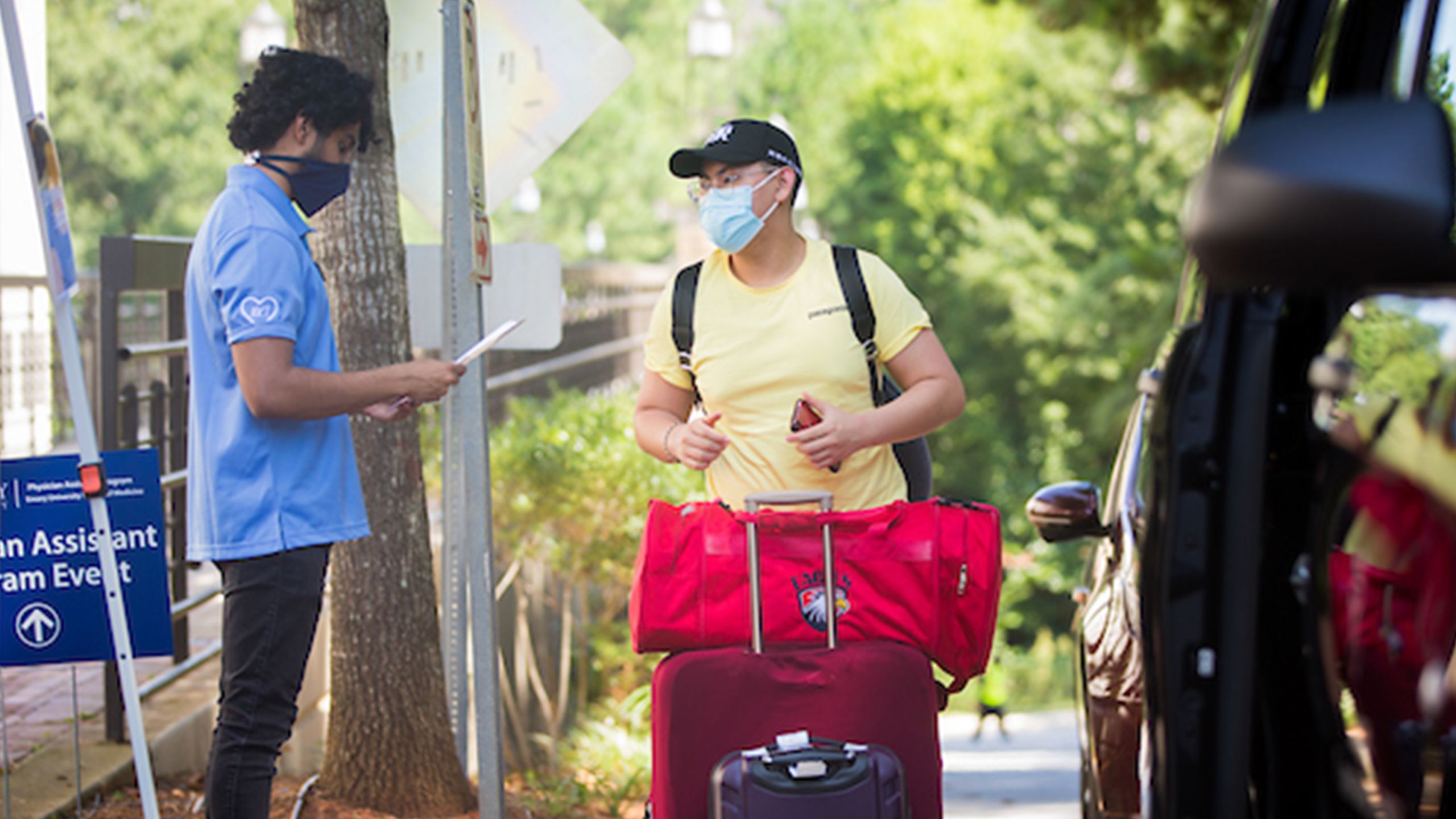
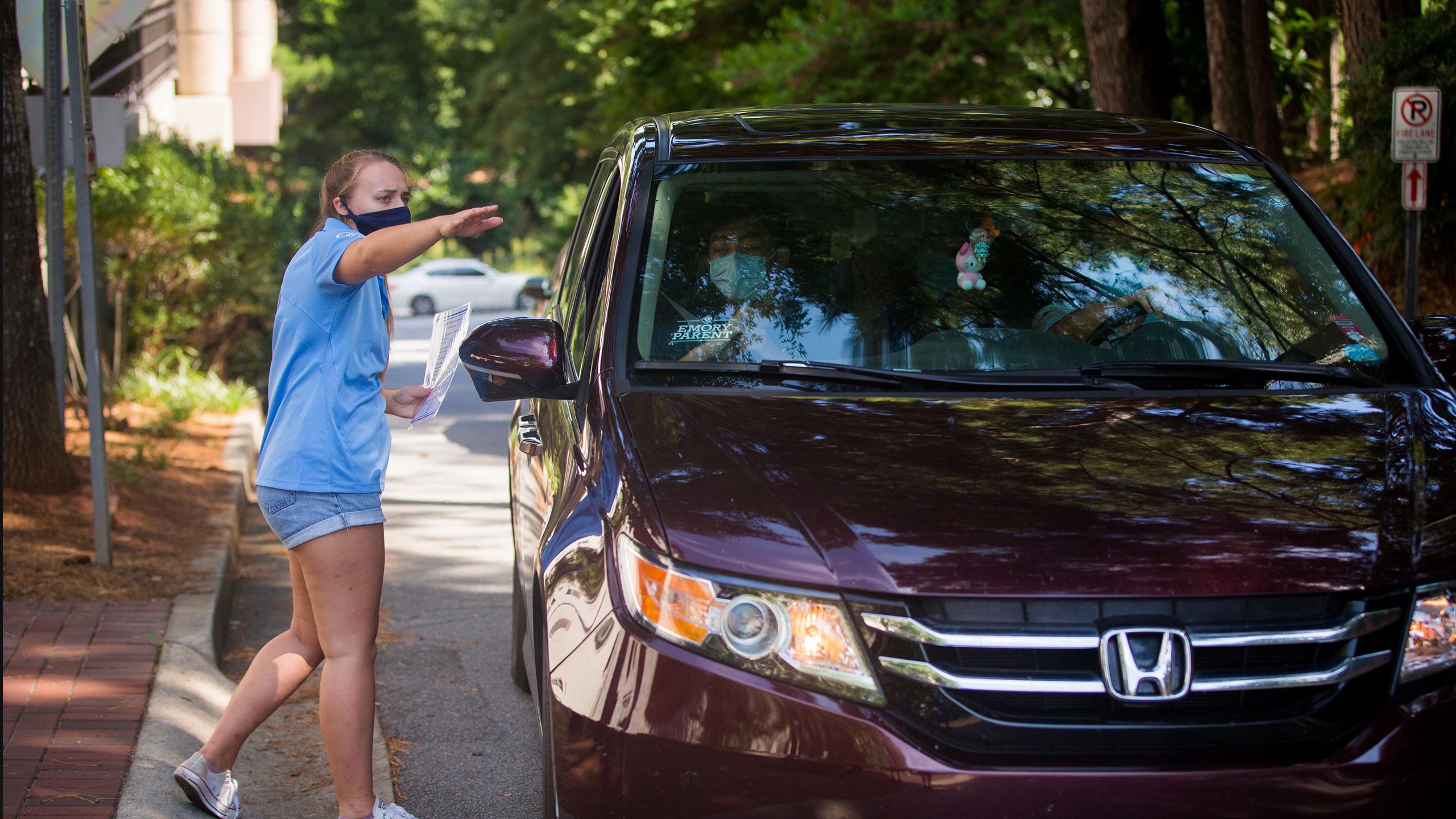
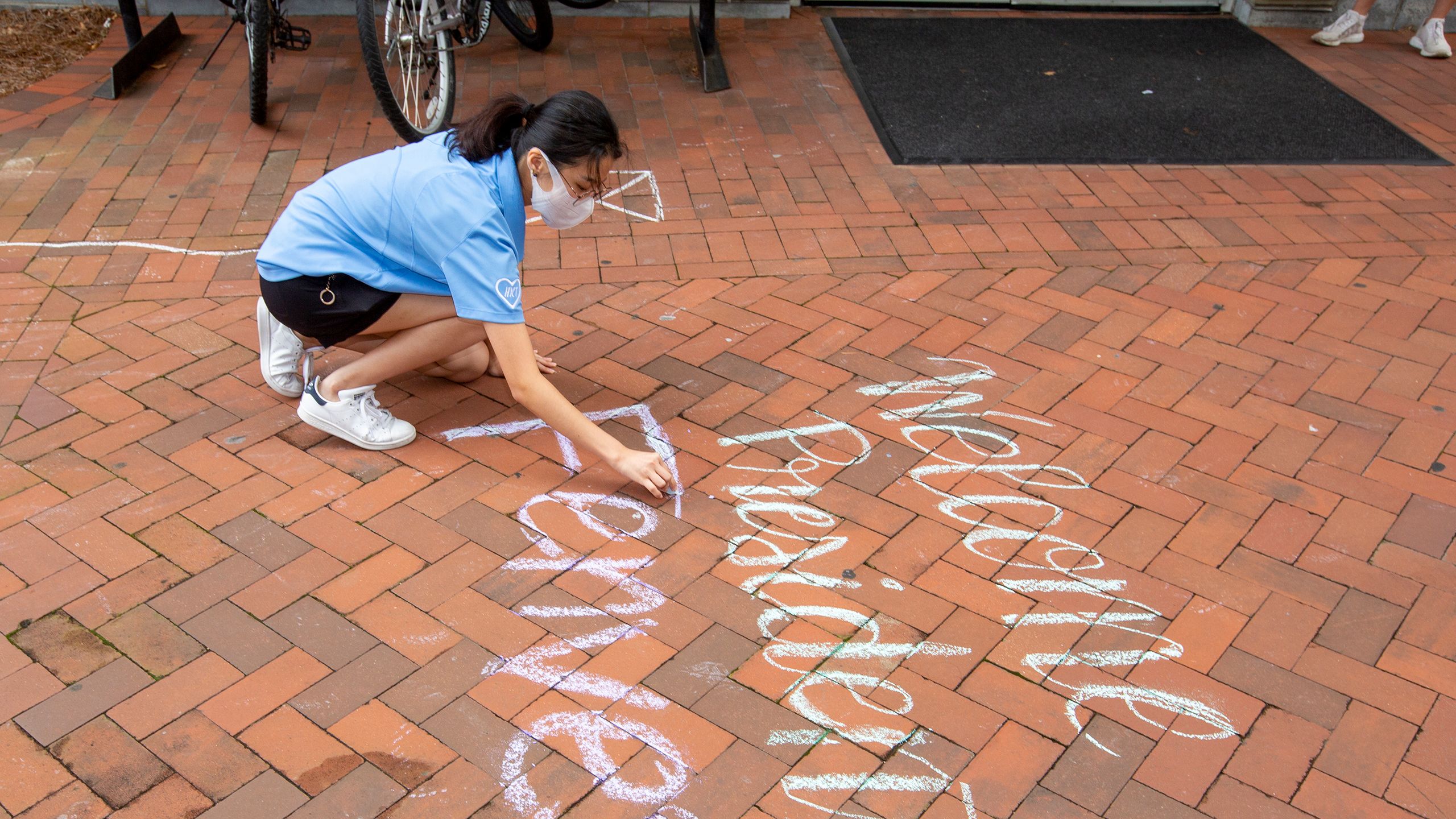
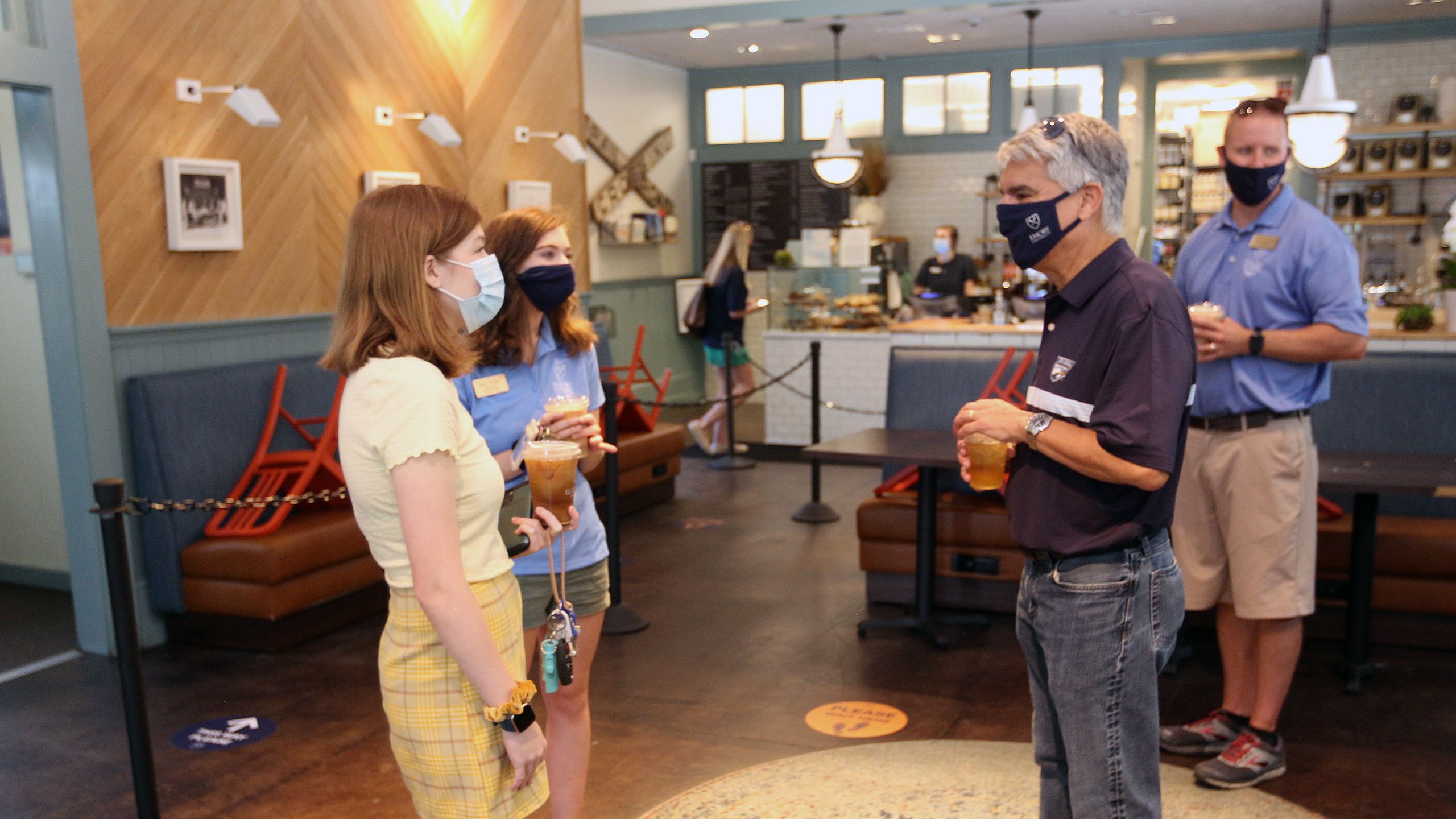

Students arriving at both Emory and Oxford campuses were welcomed with open arms, though from at least a six-foot distance.
Students arriving at both Emory and Oxford campuses were welcomed with open arms, though from at least a six-foot distance.

All students returning to campus received a welcome kit that contained Emory-branded face masks and other safety items.
All students returning to campus received a welcome kit that contained Emory-branded face masks and other safety items.

Emory leaders made sure the university used enhanced testing and safety protocols that were driven by experts from Rollins School of Public Health and the School of Medicine.
Emory leaders made sure the university used enhanced testing and safety protocols that were driven by experts from Rollins School of Public Health and the School of Medicine.

Incoming students were required to take a rapid COVID-19 test before being able to check in to their residence halls this August
Incoming students were required to take a rapid COVID-19 test before being able to check in to their residence halls this August

COVID-19 screening and testing are part of enhanced health protocols.
COVID-19 screening and testing are part of enhanced health protocols.

Even Swoop is required to follow the mandatory mask policy.
Even Swoop is required to follow the mandatory mask policy.

Plenty of help was given to students during this unusual residence hall move-in.
Plenty of help was given to students during this unusual residence hall move-in.

Students were given a longer window—five days—than usual to complete their move-ins
Students were given a longer window—five days—than usual to complete their move-ins

Staff, faculty, and student volunteers directed traffic and handled a variety of other tasks to make sure move-in went as smoothly as possible.
Staff, faculty, and student volunteers directed traffic and handled a variety of other tasks to make sure move-in went as smoothly as possible.

After months of waiting and sheltering at home, students were glad for a return to college life.
After months of waiting and sheltering at home, students were glad for a return to college life.

President Gregory L. Fenves, at that point only in his third week at the helm of Emory, made a welcoming presence during move-in week.
President Gregory L. Fenves, at that point only in his third week at the helm of Emory, made a welcoming presence during move-in week.
READY TO LEARN

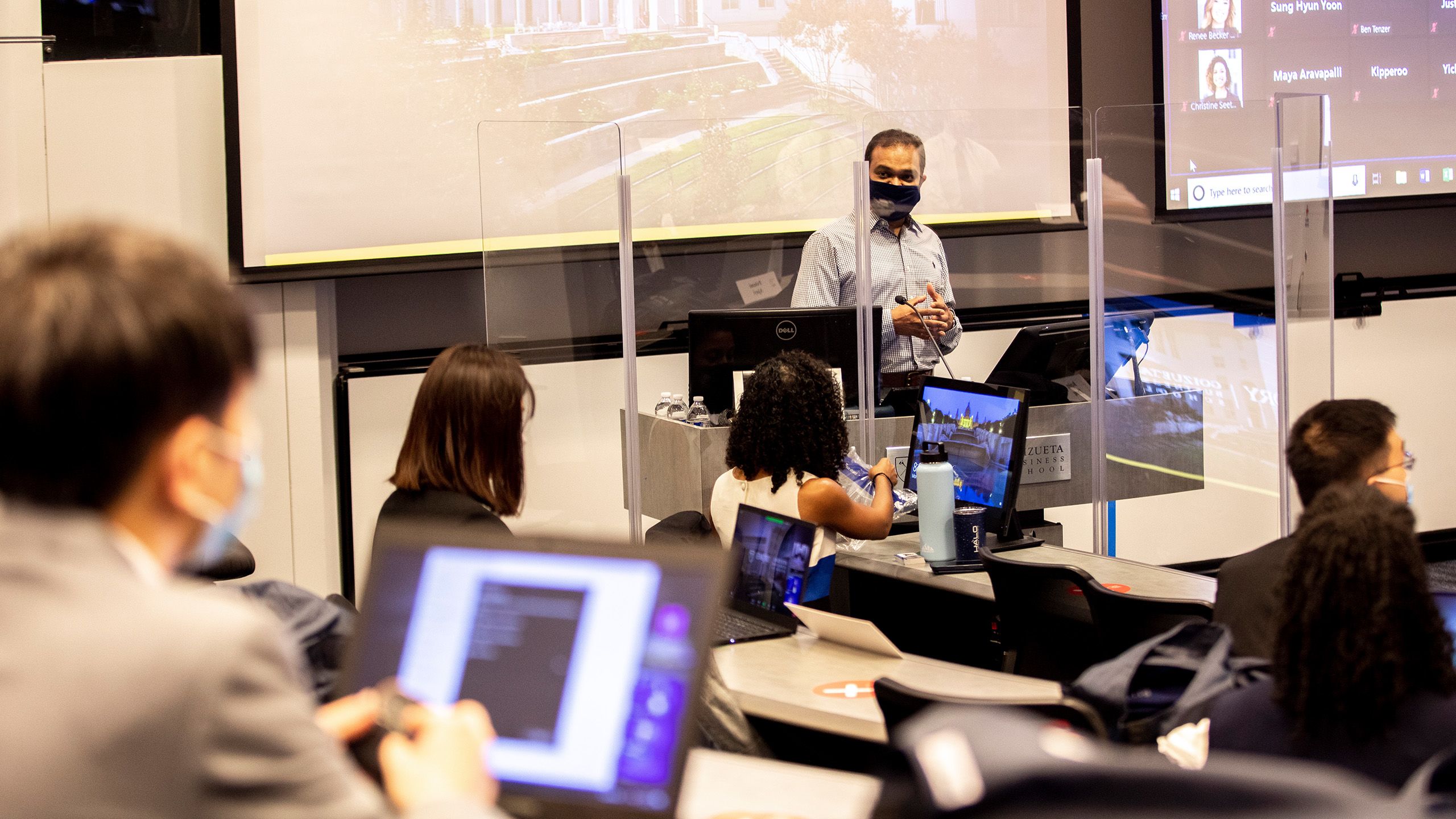
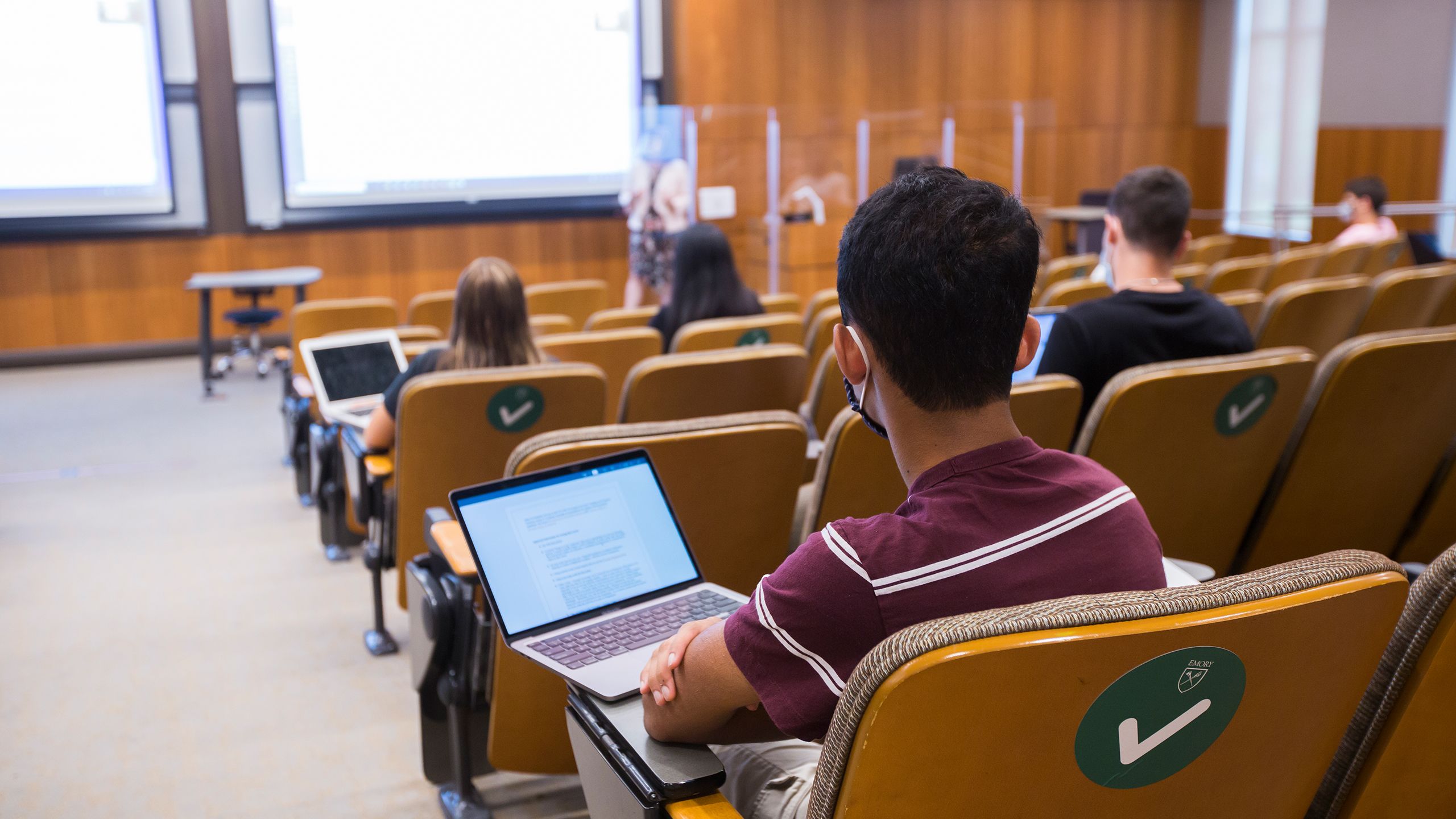
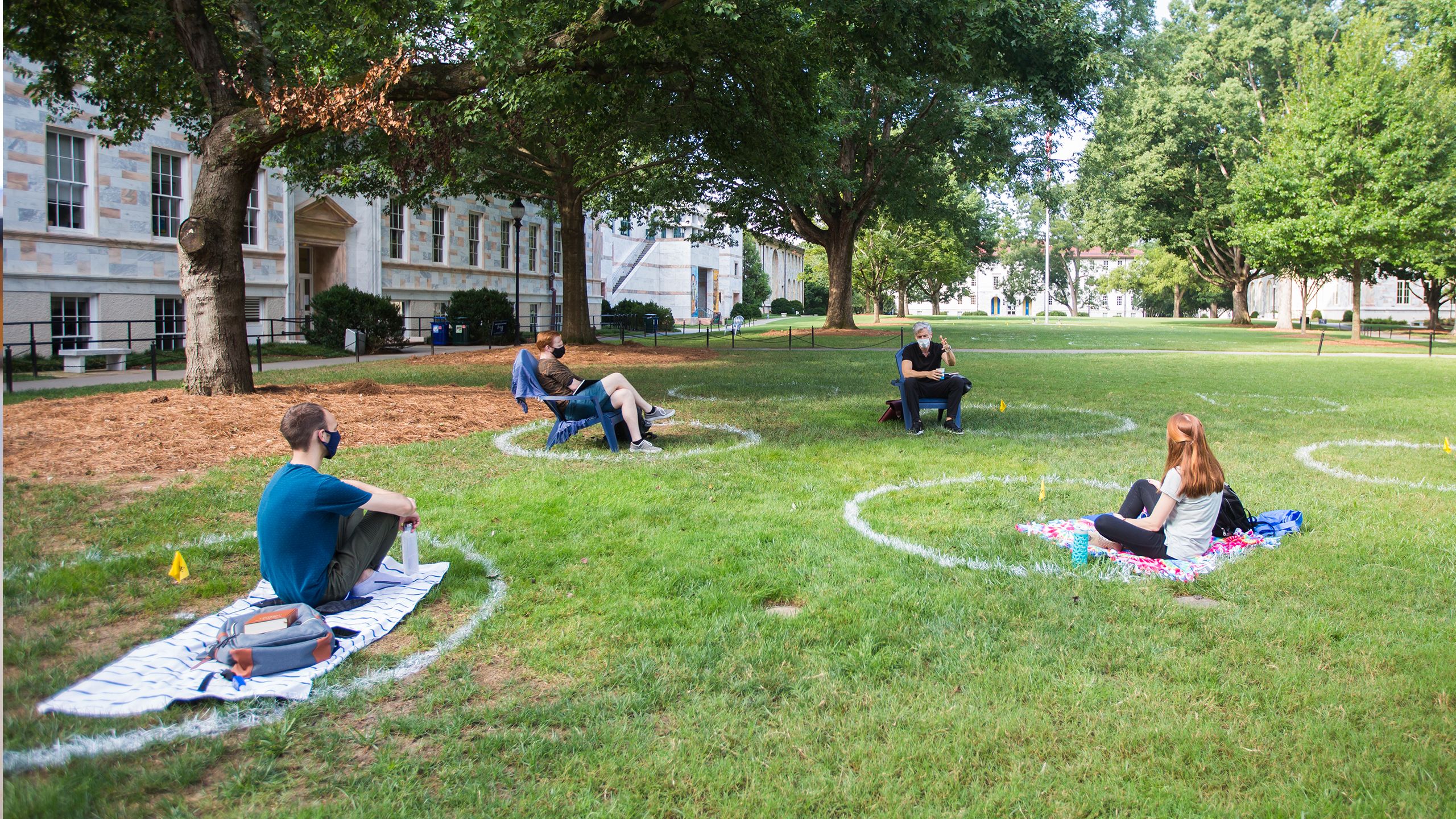
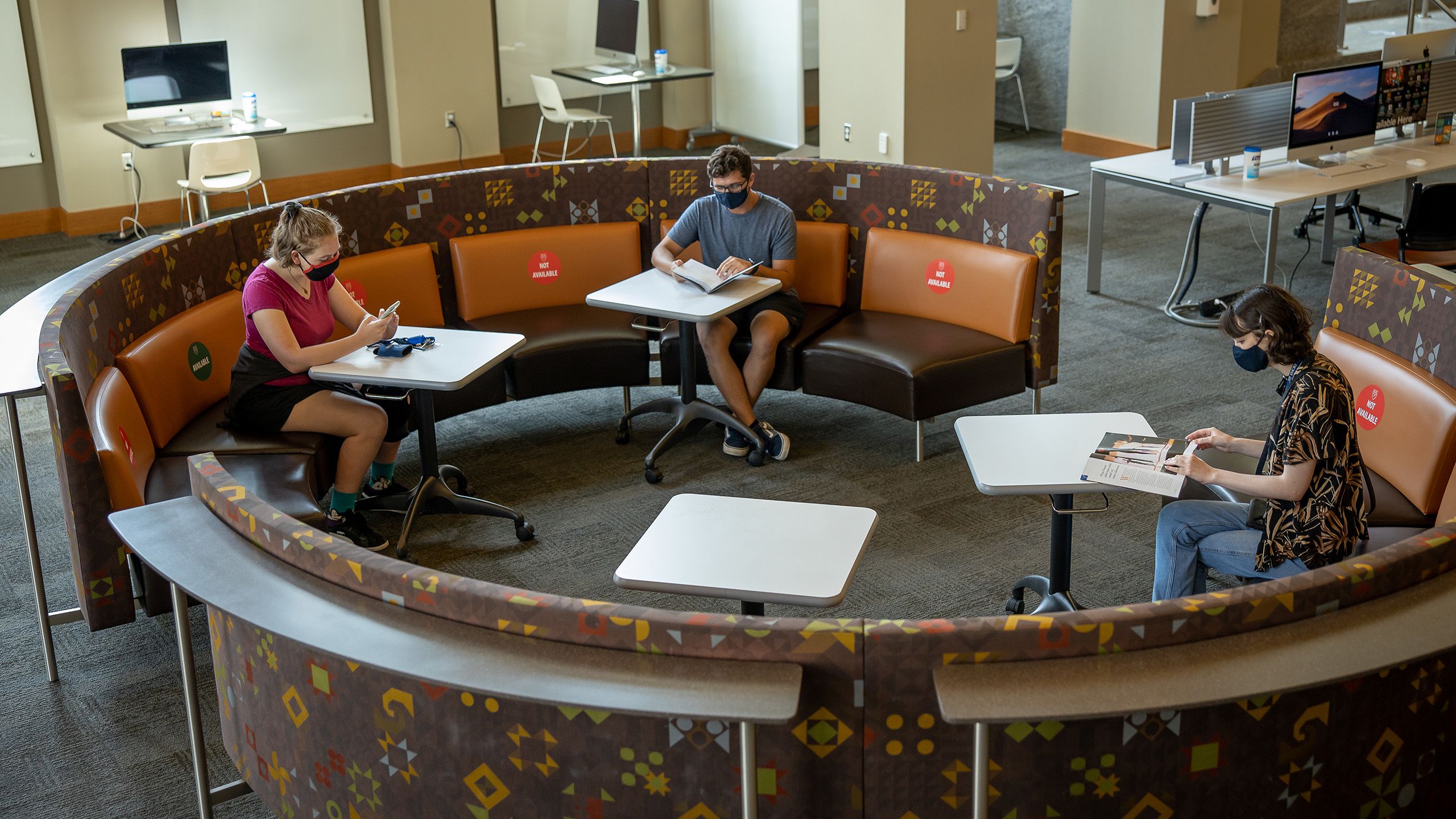

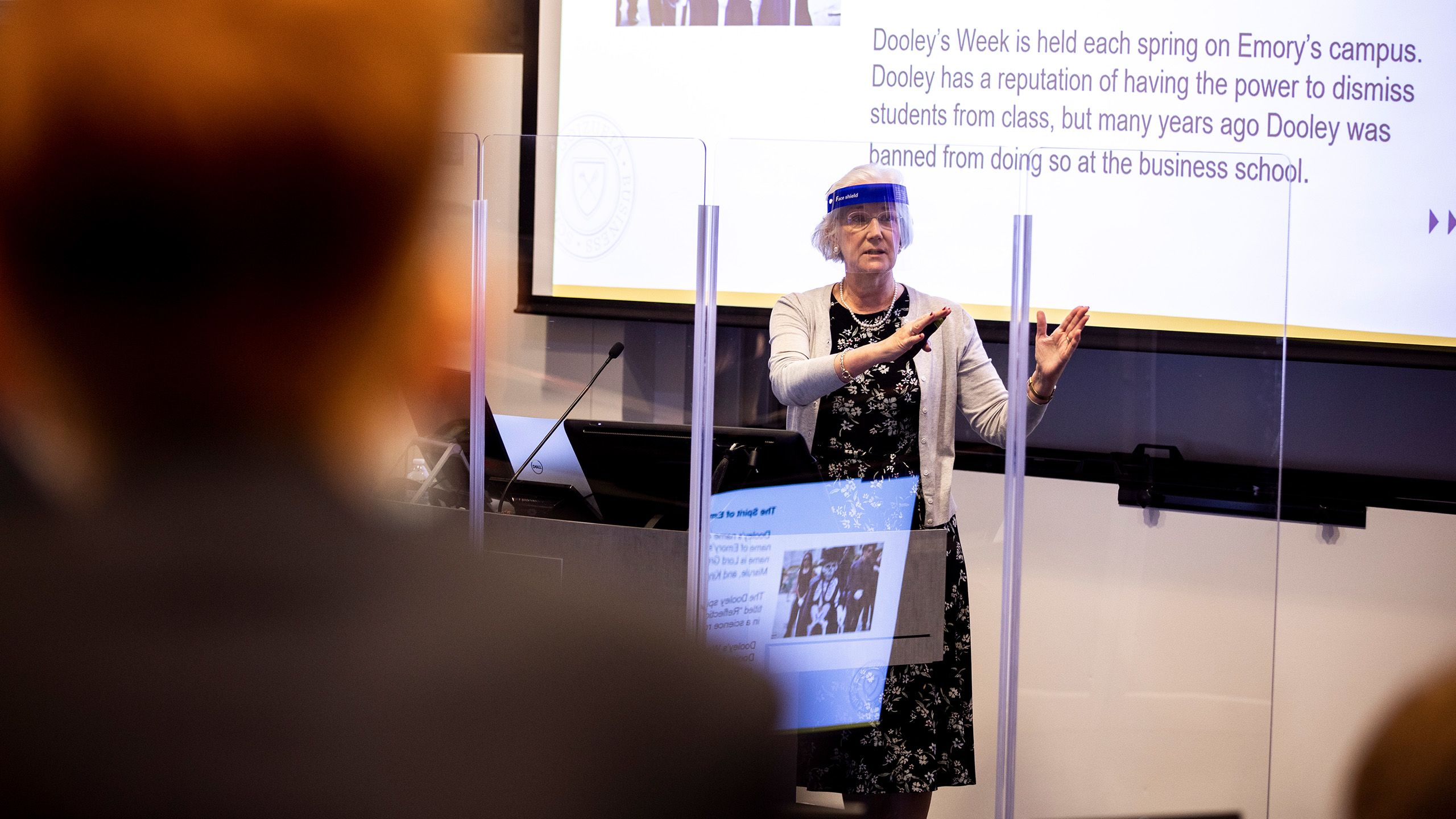


Emory faculty members spent months reconfiguring their classes for optimal, dynamic online learning.
Emory faculty members spent months reconfiguring their classes for optimal, dynamic online learning.

Classrooms were reconfigured for safety of both faculty (Plexiglass dividers) and students (spaced-out seating).
Classrooms were reconfigured for safety of both faculty (Plexiglass dividers) and students (spaced-out seating).

Social distancing and mask wearing are novel norms both inside and outside of Emory buildings.
Social distancing and mask wearing are novel norms both inside and outside of Emory buildings.

Indoor spaces on both Emory and Oxford campuses were reconfigured to maximize social distancing and safety.
Indoor spaces on both Emory and Oxford campuses were reconfigured to maximize social distancing and safety.

New signage has been installed all across both campuses to maximize safety.
New signage has been installed all across both campuses to maximize safety.

In-person classes were significantly reduced in number and size this semester, with most classes being offered online only.
In-person classes were significantly reduced in number and size this semester, with most classes being offered online only.

Emory libraries has to reconfigure their spaces and rethink their services to provide ample support for both in-person and online students, faculty, and staff.
Emory libraries has to reconfigure their spaces and rethink their services to provide ample support for both in-person and online students, faculty, and staff.
IN-BETWEEN CLASSES
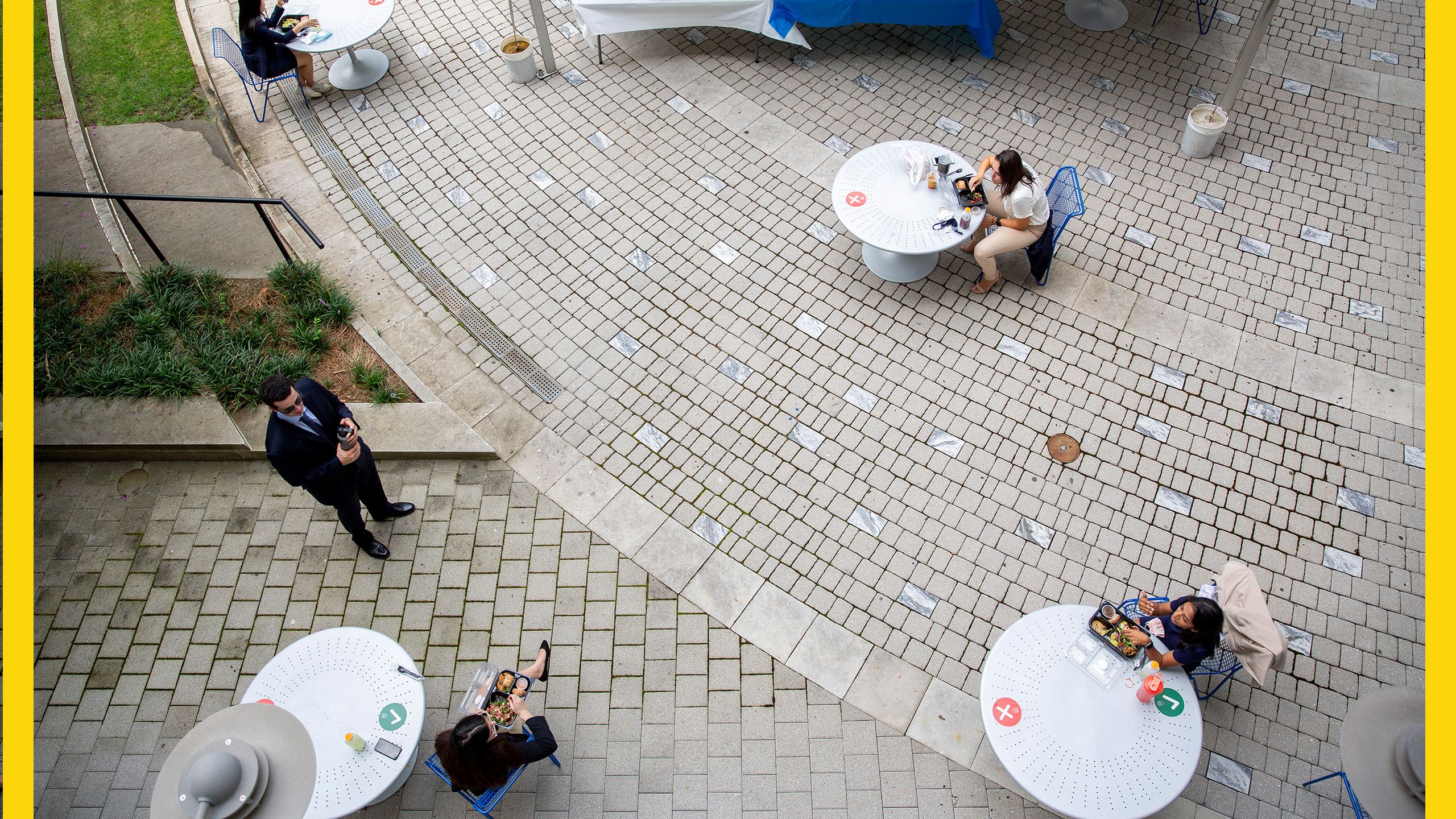
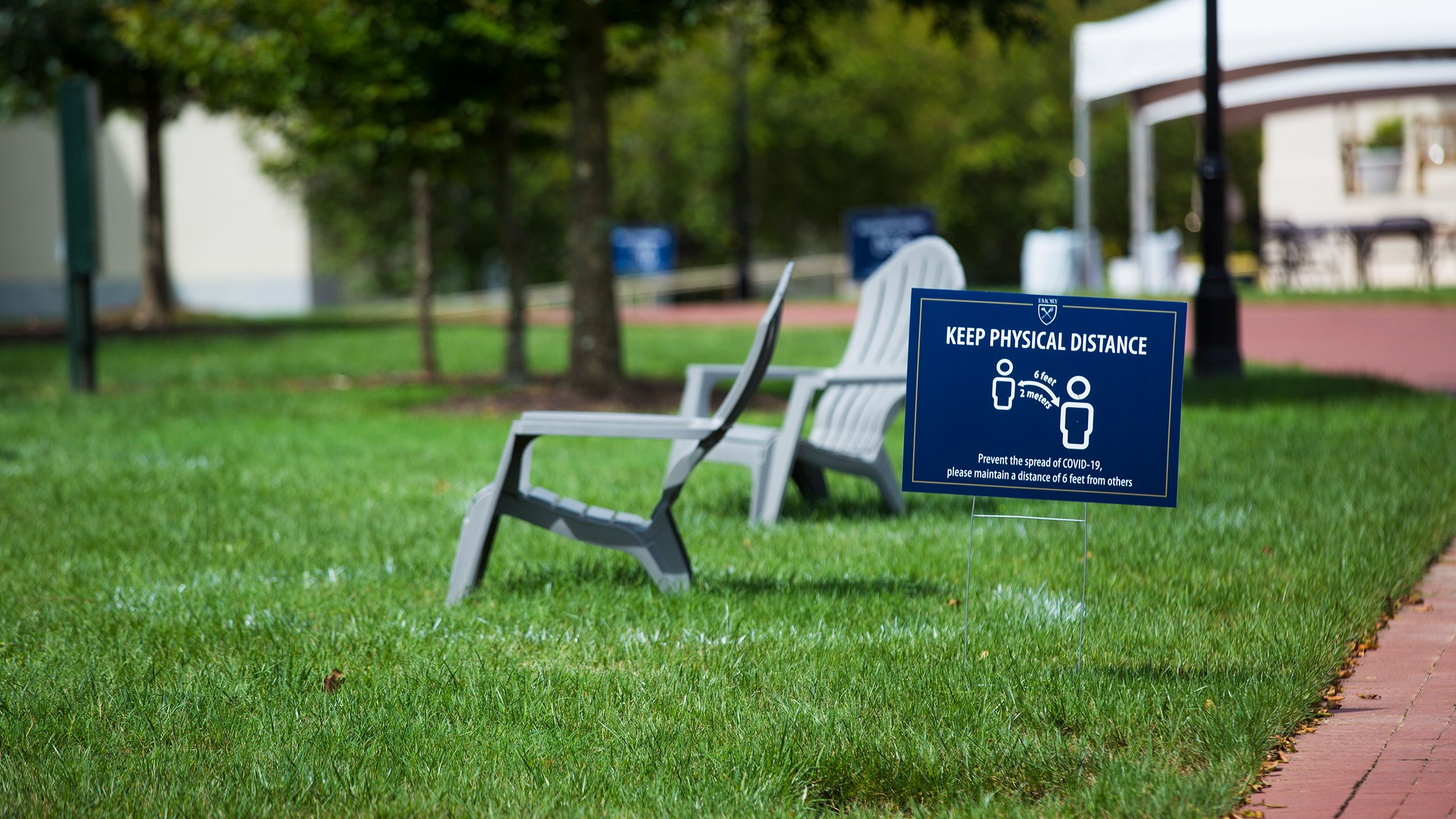
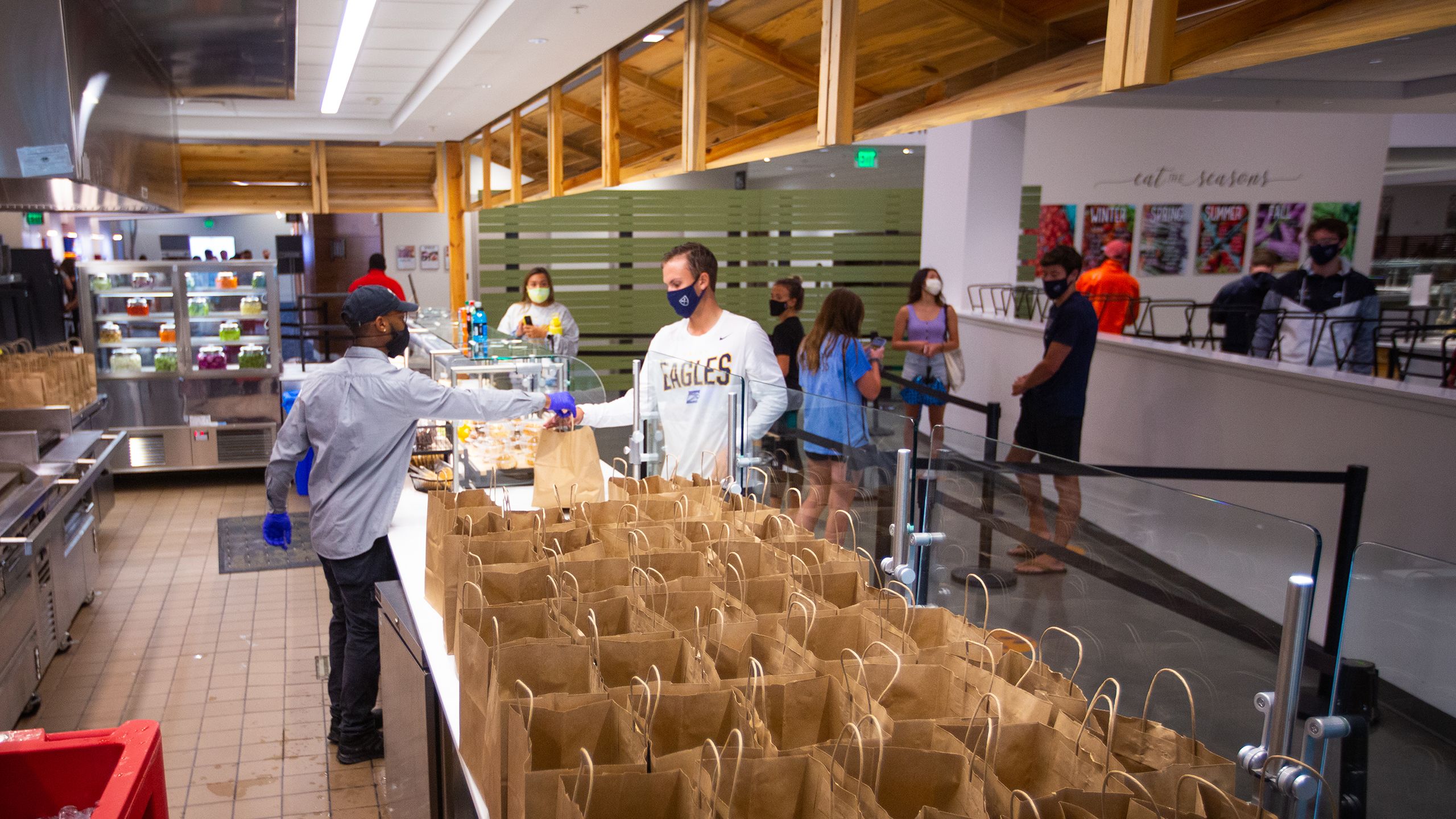
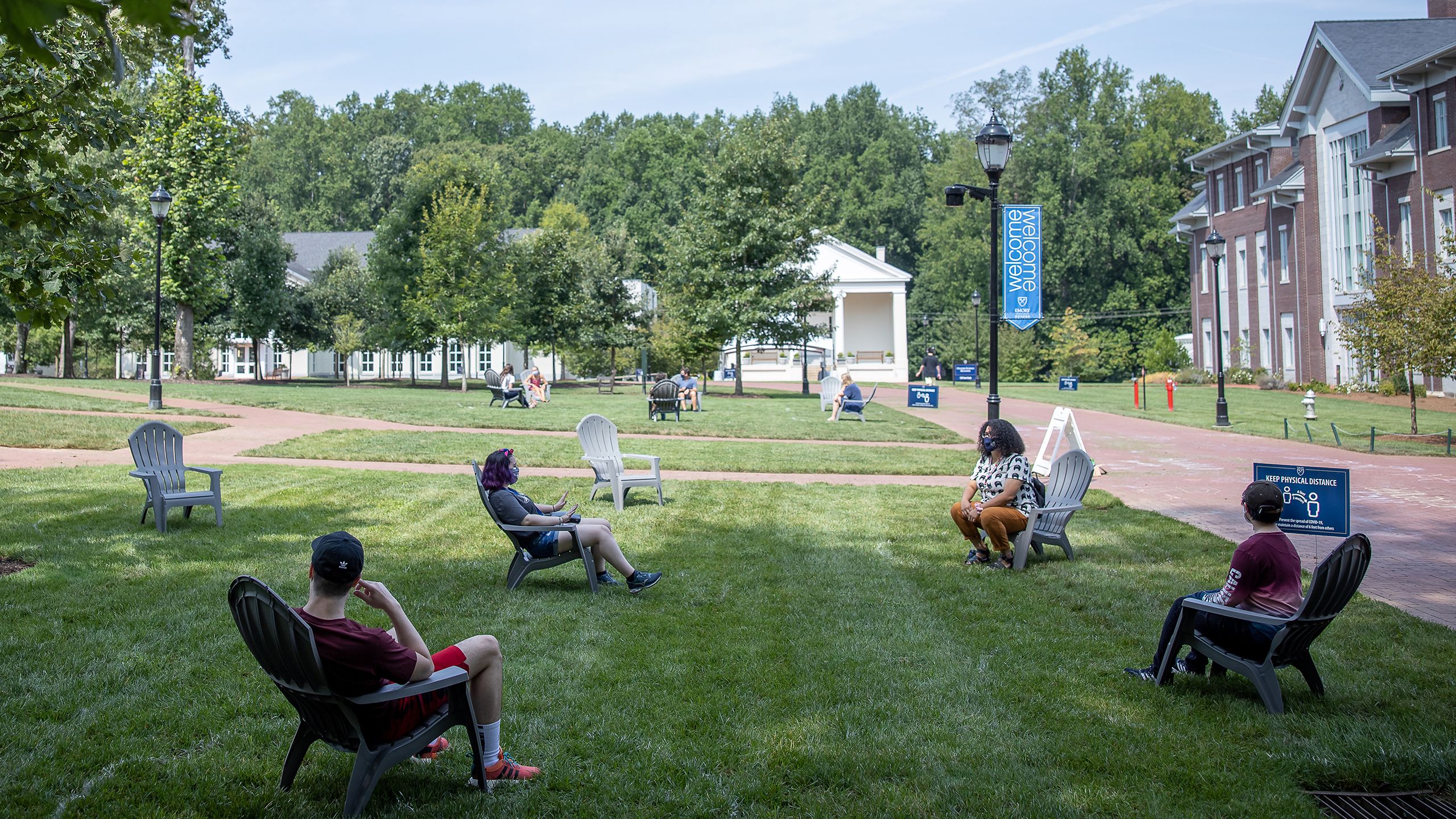

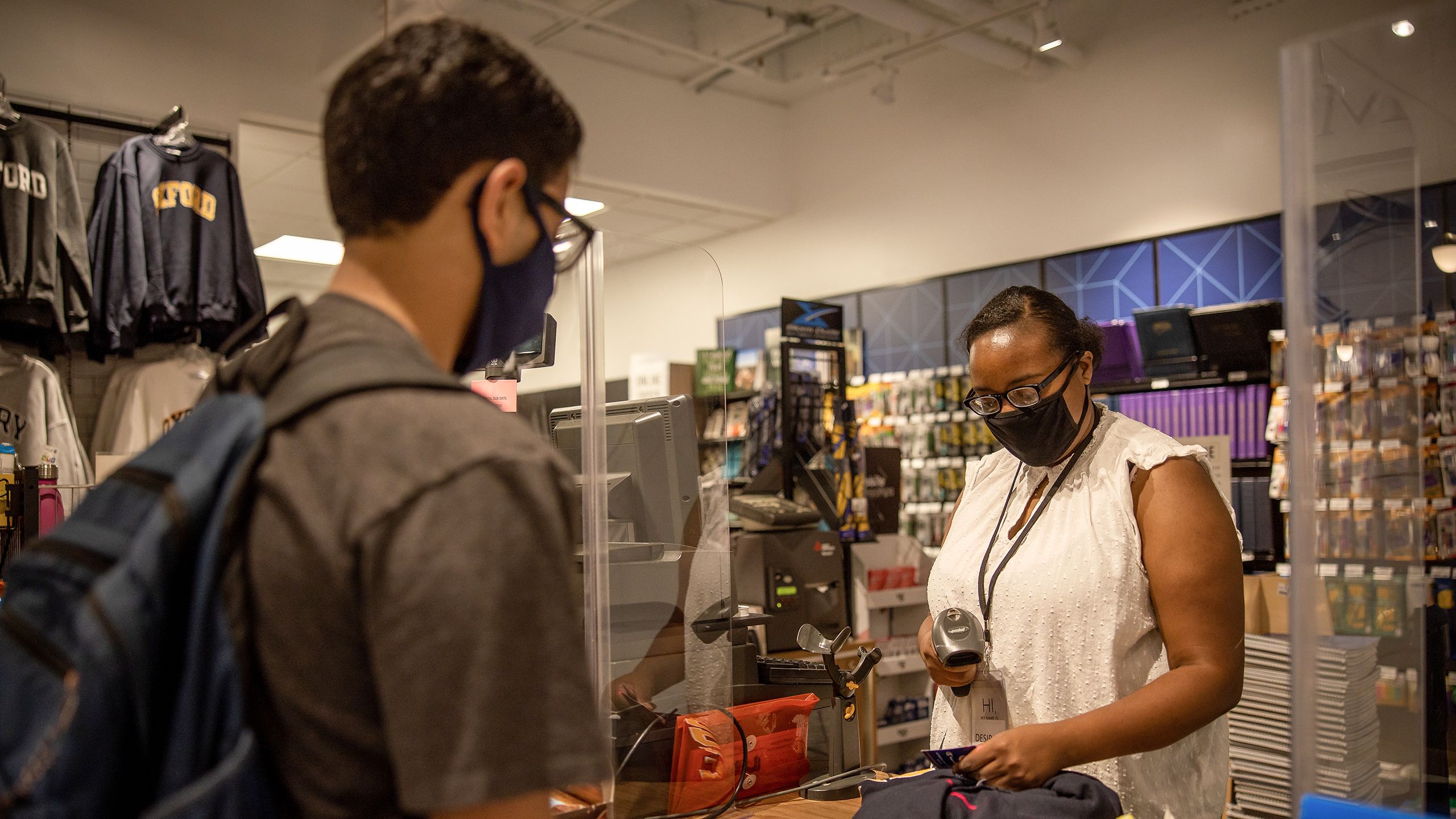

New signage has been installed all across both campuses to maximize safety.
New signage has been installed all across both campuses to maximize safety.

Campus dining is open and available on both campuses, with many locations emphasizing to-go service.
Campus dining is open and available on both campuses, with many locations emphasizing to-go service.

Emory and Oxford student can still get together and hang out, especially on a beautiful day, just at a safe distance.
Emory and Oxford student can still get together and hang out, especially on a beautiful day, just at a safe distance.

The COVID-19 restrictions took nothing away from the beauty of Emory's campuses, including Oxford's gorgeous Quad.
The COVID-19 restrictions took nothing away from the beauty of Emory's campuses, including Oxford's gorgeous Quad.

Though some in-person services were reduced to match the fewer numbers on campus this semester, students could still shop in the bookstore and fill most of their out-of-class needs.
Though some in-person services were reduced to match the fewer numbers on campus this semester, students could still shop in the bookstore and fill most of their out-of-class needs.

Want to know more?
Please visit Emory Magazine, Emory News Center, and Emory University.

